Capital:
Ulan Bator
Currency
Tugrik
Best time to visit:
The best time to visit Mongolia is from April to October.
In a word:
Сайн уу (hello)
Vaccines
None
Warnings:
– If you opt for self-drive: be careful because the roads are often extremely unpaved.
– If you sleep in nomad gers, you may often not find a shower, electricity, and/or bathroom.
At the table:
In Mongolia, you eat very well, mutton reigns supreme: you will go crazy with buuz (steamed dumplings filled with mutton), khuushuur (mutton pancakes) or urum (milk cream similar to clotted cream) always accompanied, strictly, by suutei tsai (salted milk tea).
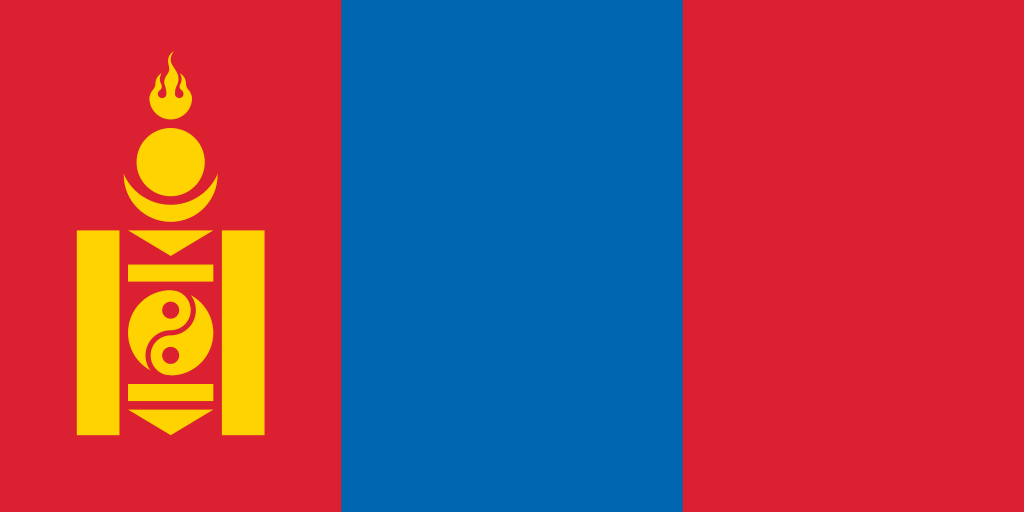
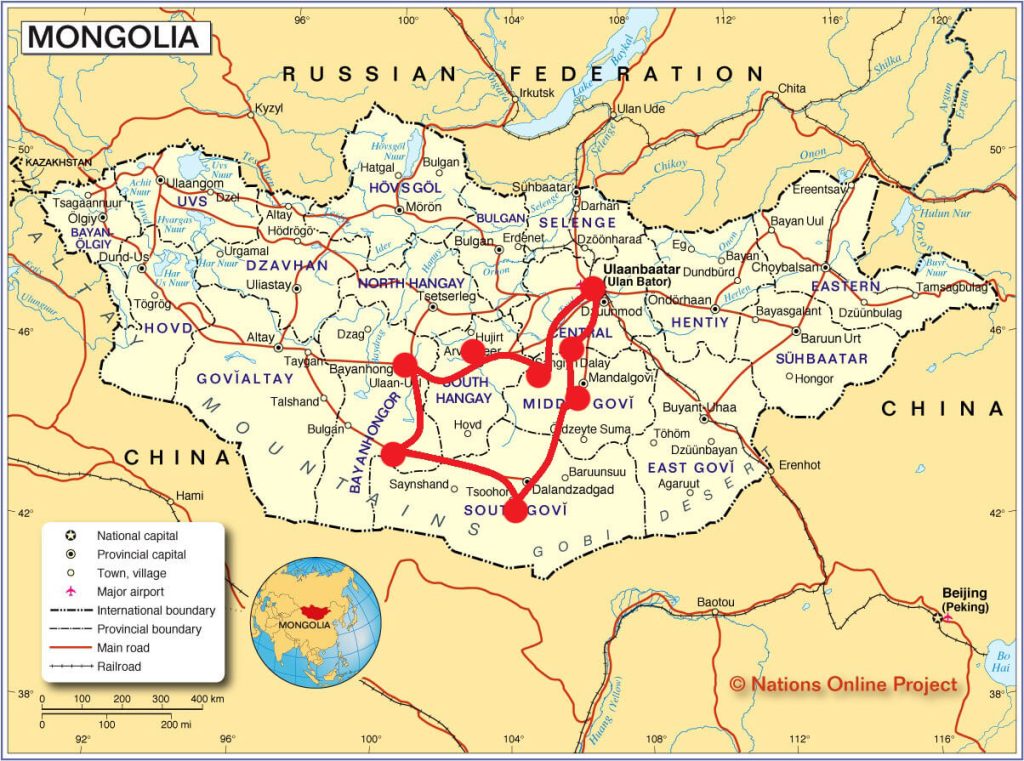
Essential experiences:
Immerse yourself in nomadic culture by living with a local family, eating with them, and sleeping in gers; climb the dunes of the Gobi Desert on tall camels; and lose yourself among the ancient Buddhist temples of Karakorum.
Mongolia is a gigantic natural park. Its boundless steppes, mountains, and forests are rarely interrupted by small urban settlements or roads. Aboard an old Soviet UAZ, we will slowly explore central and southern Mongolia, all the way to the Gobi Desert and the border with Mongolia. ChinaWe will stay with the families of local nomadic shepherds, eat with them, sleep in their gers where showers are a rare luxury, where electricity, when available, comes from a car battery, and where the bathrooms consist of a very deep hole in the ground 200 meters from the ger. But we will be dazzled by the marvelous beauty of its flora and fauna, we will be moved by watching herds of horses run free in the steppe or slow yaks and camels graze peacefully. We absolutely recommend relying on a local tour operator to facilitate all the transfers on the arduous dirt roads and, above all, to secure reservations for the nomadic gers and the various local experiences that the great Uka of Uka Tours Mongolia with her team mates: Thema (driver) and Chingun (guide/translator) she has very professionally managed to take care.
Our suggested itinerary (14 days) | |
four days: | Ulaanbaatar (Naran Tuul market visit); Baga Gazriin Chuluu (visit to the Land of rocks); Tsagaan Suvarga (visit to the White Stupa) |
three days: | Yolym Am (horseback ride to the canyon); Khongor (climb to the top of the Gobi dunes and ride on a camel); Bayanzag (discover the Flaming Cliffs following the story of adventurer Roy Chapman) |
four days: | Ongin (visit to the Barlim Khiid and Khutagt Khiid temples and meet with local Buddhist monks); Orkhon Valley (day of horseback riding to the Orkhon Khurkhree waterfall and experience with a nomadic herder family) |
three days: | Karakorum (visit to the Erdene Temple and the Karakorum Museum); Ulaanbaatar (visit to the city center and Sukhbaatar Square; wonderful Natural History Museum with its dinosaurs; Gandan Khiid – the largest Buddhist temple; visit to the Statue of Genghis Khan and Turtle Rock in Terelj National Park) |
Mongolia is said to be the least densely populated country on the planet, but when you visit Ulaanbaatar, you'll hardly believe it! The overcrowding of people, buildings, and especially vehicles is oppressive.
Imagine that of the country's 4 million inhabitants, almost half are concentrated in the capital alone, making urban travel impossible: a 5 km journey takes an hour and a half by car.
If you then consider that Mongolia is five times the size of Italy, you will understand that we are talking about a completely uninhabited country!
We are welcomed by the very sweet Uka and her driver Thema on board a beautiful UAZ, an old Soviet van, and we immediately make a short pit stop in the wonderful Ibis Style Ulaanbaatar Polaris where we will spend the first and last nights of this exciting journey.
Considering that we will be sleeping mostly in gers (Mongolian yurts), without showers, bathrooms, or electricity for two weeks, a little pre- and post-trip pampering was necessary, and I'd say we chose the right place! It's located in a great position not far from the city center; it can take a good care of all its guests and we have simply loved it!
We spend an entire afternoon absorbed in the orderly chaos of Mongolia's largest market: Naran-Tuul.
Here you can find absolutely everything and between one purchase and another you can also take advantage of a light lunch in one of the many local restaurants where we enjoyed succulent buuz (mutton ravioli) and tsuivan (mutton and vegetable dish) while drinking suu te tsai (salted milk tea).






We leave Ulan Bator and its traffic and after an hour on the road the asphalt ends… We won't see him again for a long time.
Our old Soviet UAZ, super basic, uncomfortable, even if we are already growing fond of it, surprises us on dirt roads and rocky paths.
It glides along as if nothing had happened, and when you ask why this is the most popular vehicle here in Mongolia despite it not being the newest, most well-equipped, or aesthetically pleasing, they will simply reply: “Not all vehicles can withstand the Mongolian winter”!
Consider that Ulan Bator has been crowned the coldest city in the world.
Baga GazriinChuluu, Land of rocks.
This granite rock formation in the heart of a dusty plain once sheltered monks who left behind cave paintings. Today, the rocks are revered by locals who sometimes make pilgrimages there. It is also said that Genghis Khan came here to graze his horses. The ovoos, balanced stone columns, nestled in a large canyon, are particularly picturesque.
First night in the gher, the bathroom is far away and tragicomic, when the sun sets, the temperature immediately begins to drop but we have to get used to it since it will always be like this for the next two weeks.
Who knows if Nora and Jago will be able to face this journey, but just watching them play with stones in the middle of nowhere, in front of our gher, I smile and realize that children have a spirit of adaptation far superior to adults.
We set off early in the morning, crossing the endless steppes of the Middle Gobi province. We stop for lunch at one of the many local trucker restaurants, and I'm always amazed by their daily lives, how the whole world is the same, how all human beings do almost the same things, have the same needs, even here at the edge of the world!
In the early afternoon we reach Tsagaan Suvarga, also known as the “White Stupa”, also called the “Mongolian Grand Canyon”.
It's a majestic canyon, 60 meters high and 400 meters wide. Numerous marine fossils have been found here, as a great sea once existed here. Wind and weather took 10 million years to create this immense natural work of art with breathtaking views.
In the late afternoon we finally arrive at our camp for today.
Unexpectedly, there is a super clean gher and they even have a sort of shower, I wasn't expecting it and we immediately took advantage of it to recharge.
The most romantic sunset of the trip greets us, disappearing behind our gher.
Long transfer to the far south of Mongolia, the landscape changes decidedly, it is greener even if we have officially entered the Gobi province.
Lunch in one of the many street restaurants featuring excellent khuushuur (mutton pancakes), but above all my beloved buuz… who said the food in Mongolia was bad?
Destination Yolym Am (meaning vulture's mouth), was originally declared a protected area to protect the region's birdlife, while today it is best known for its evocative rocky cliffs and narrow, dark canyons, surrounded, when it rains, by picturesque waterfalls.
We visit the local museum, which mainly displays stuffed animals from the area. There are even the adorable pikas, small, mouse-like creatures that are a favorite food of eagles. They're also curious because they never hibernate, preferring to take advantage of the summer to stock up on food.
On horseback, each on his own horse, we reach a large ovoo where we leave our horses to continue on foot along a narrow canyon alongside a small river to admire the many viewpoints of the valley.
Tonight we'll be sleeping in a ger again. Luckily, it looks clean and nice. This Mongolia is already offering us unique memories.
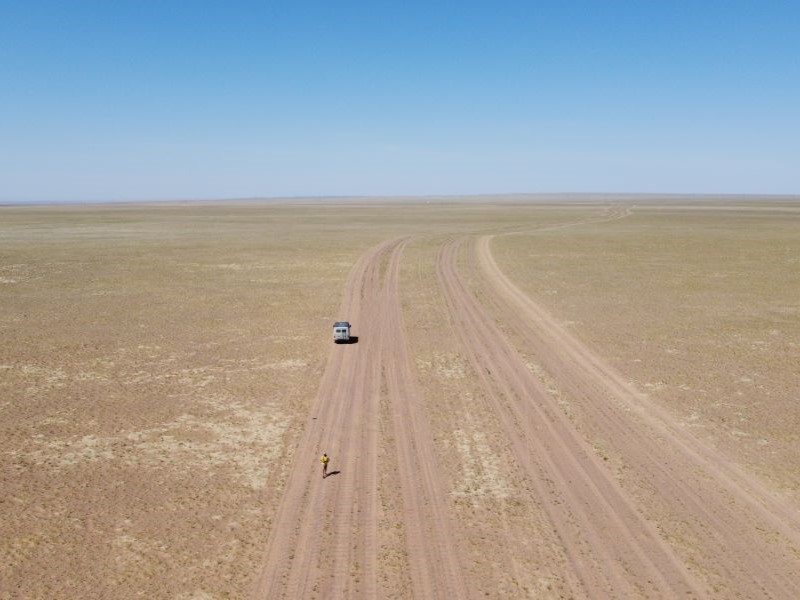
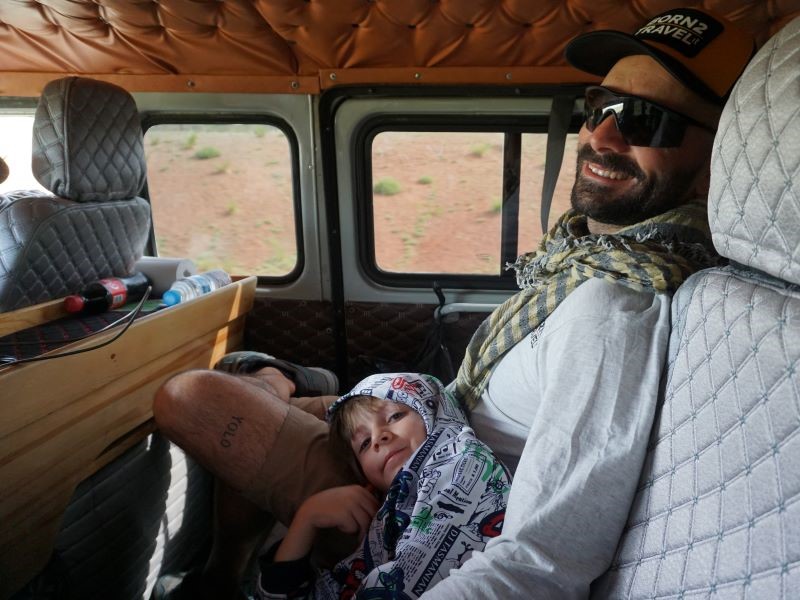
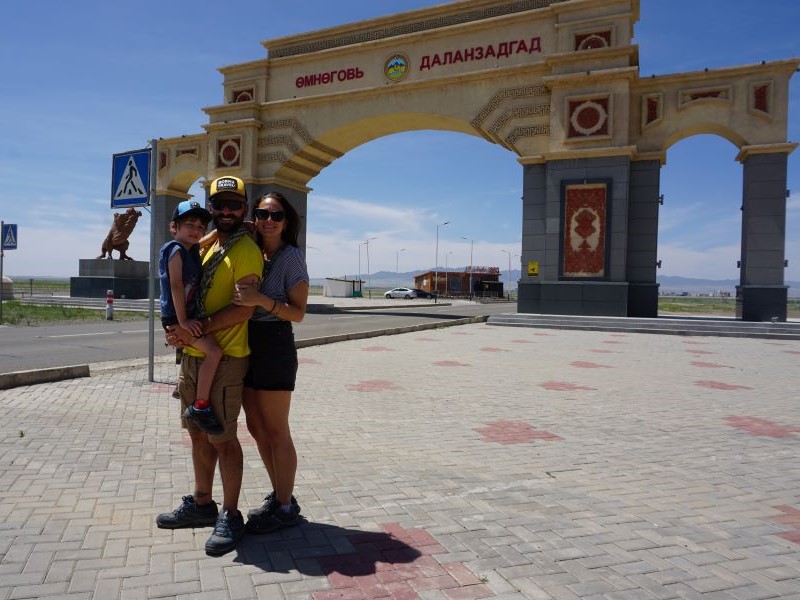
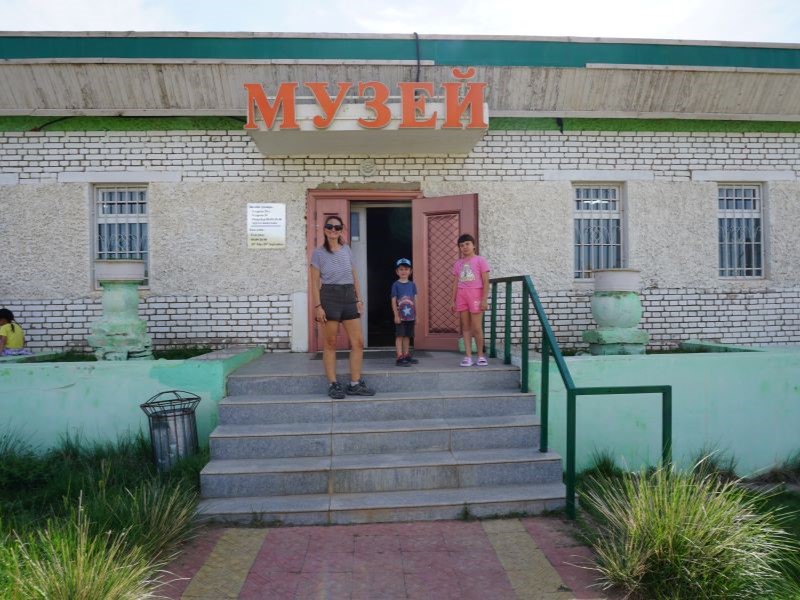
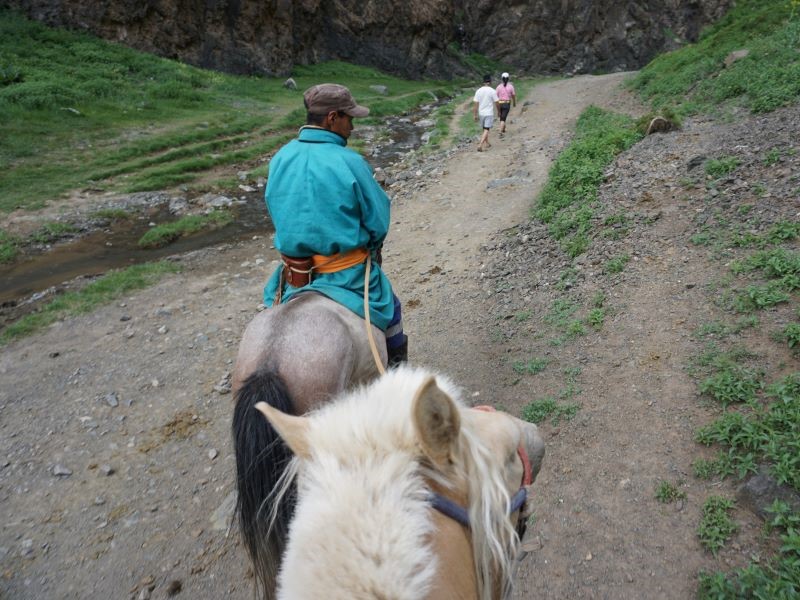
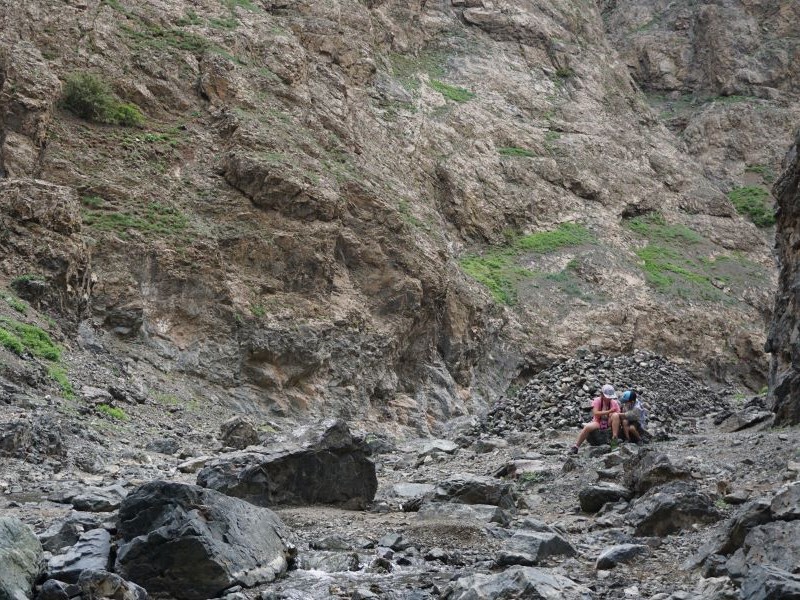
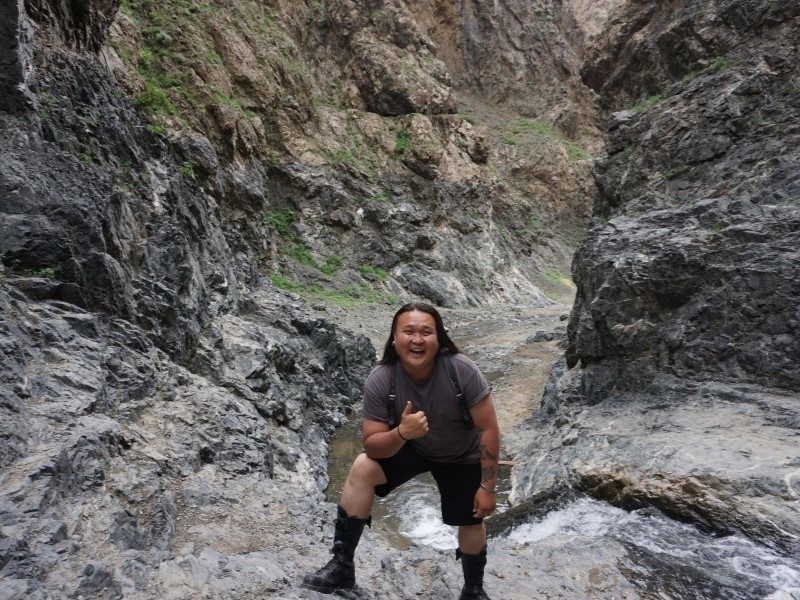
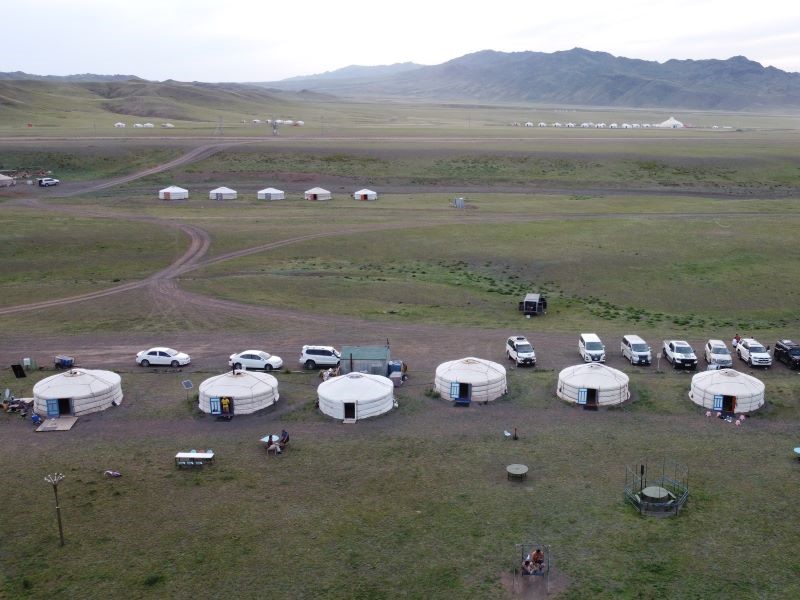
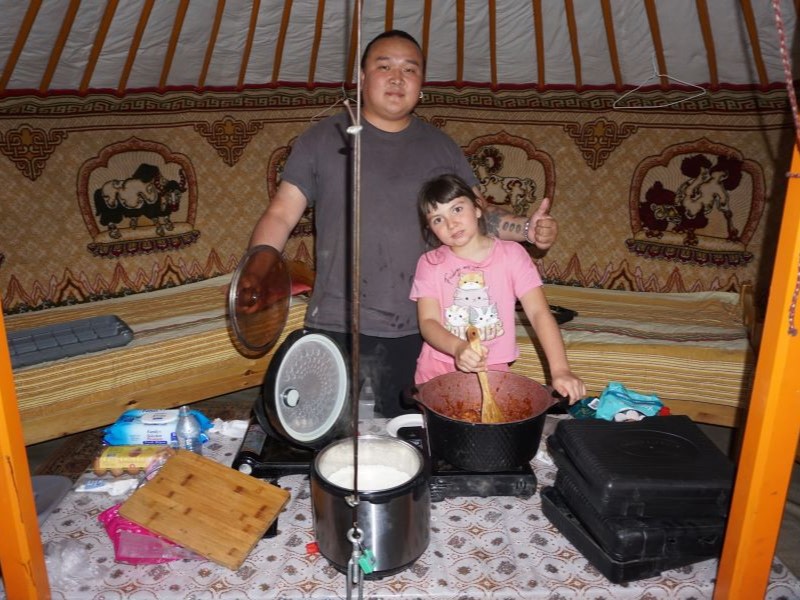
The Gobi is undoubtedly a desolate, immense, harsh and silent place.
Today's journey was quite arduous, our UAZ climbed, descended, and traveled along winding paths until it took us to Khongor where we will spend the night.
Today's gher is very particular, very large, almost a gher-shaped room, let's say a modern reinterpretation of a gher, however it retains all the inconveniences of the traditional one, the electricity is only on from 8pm to 11pm.
After a binge of buuz—we can't help but gorge ourselves—we set out to conquer one of the highest dunes in the area: Duut Mankhan. Yes, in front of our ger, in addition to a large group of sleepy camels, there's a very long chain of desert dunes.
The climb is always fun, fascinating and at times difficult… But despite the fatigue, Nora and Jago managed to reach the summit alone, I'm really proud of them.
Seeing the immensity of the area from that point of view was something magical…
Around us were many glittering dunes… In the distance, every now and then a white dot appeared, a gher, or herds of brown camels placidly chewing the cud.
On the way back, we stopped at a shepherd's house who was looking after his majestic camels, and we even took a ride on their backs. How magical, their slow pace, framed by the dunes, and all around us only silence broken every now and then by a UAZ speeding along the dirt road, followed by a long trail of dust.
After a long and very winding journey leaving the dune area we reach Bayanzag whose name means “land rich in saxaul shrubs or flaming cliffs” – Flaming cliff – according to the description of the American paleontologist Roy Chapman Andrew.
The first excavations in this area took place in 1922 and today Bayanzag is internationally famous for the numerous dinosaur bones and eggs found in the surrounding area, finds that can be admired in the Natural History Museum of Ulan Bator and in other museums around the world.
A stunning desert of rocks, red sand, shrubs, sunshine, and endless empty spaces; Chapman's story and adventures gave rise to the Jurassic World and Indiana Jones sagas.
If you are a dinosaur enthusiast, this is the place to be. If you saw a brontosaurus or a T-rex in the distance, I'm sure you wouldn't be too surprised.
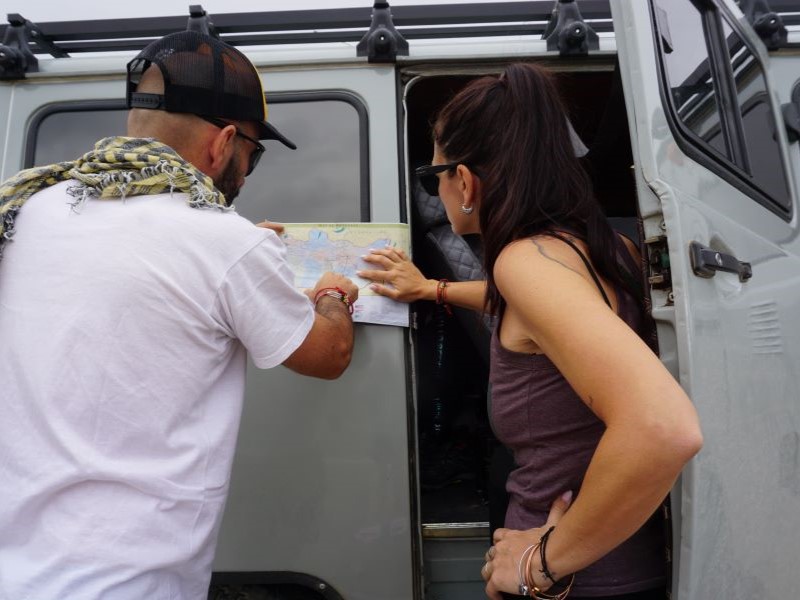
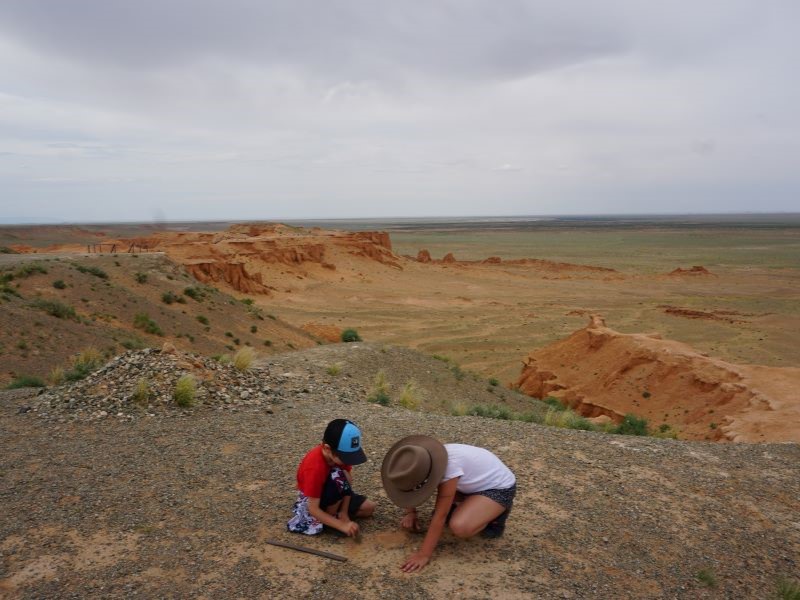
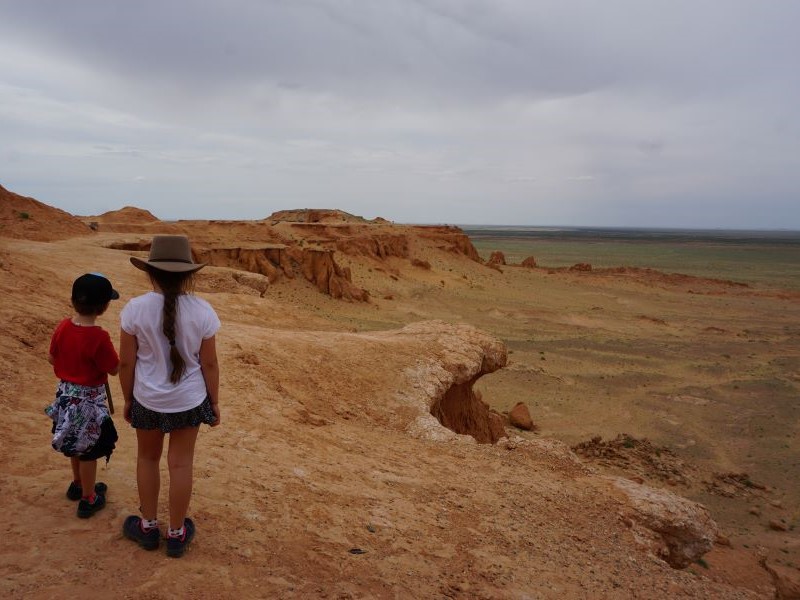
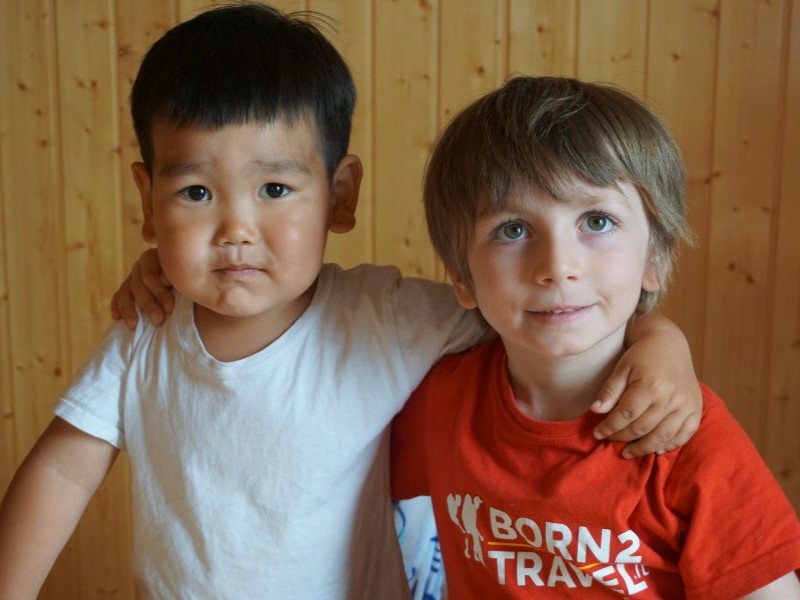
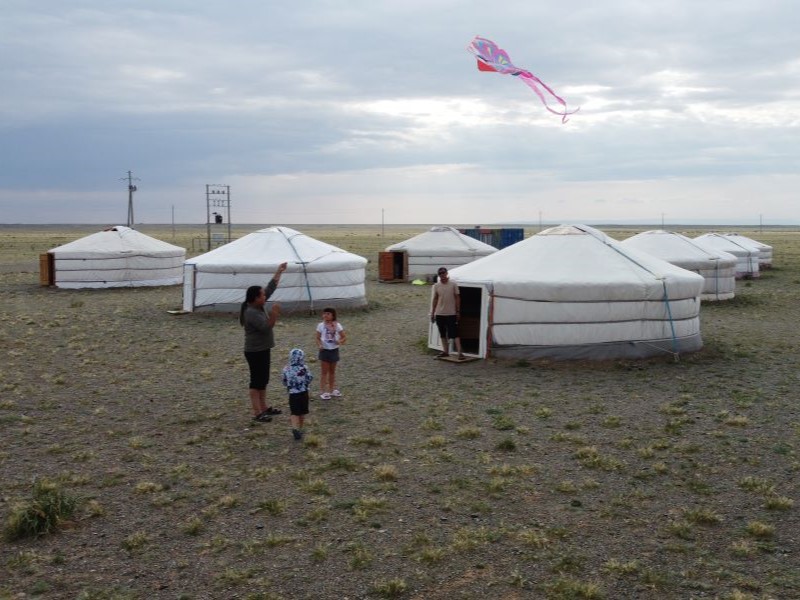
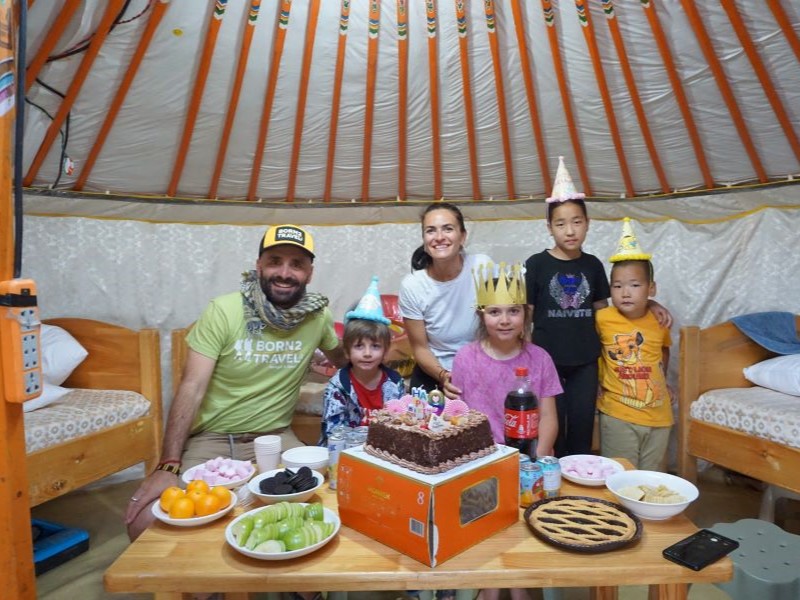
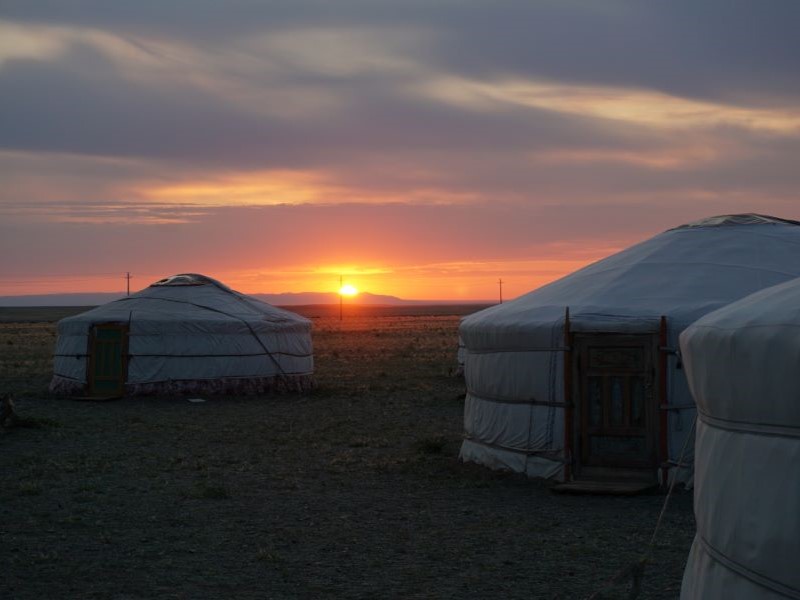
This small mountainous area along the Ongiin Gol River is a pleasant stop on the journey between the Southern Gobi and Ulaanbaatar. At the bend in the river, you'll find the remains of two ruined monasteries: the Barlim Khiid and the Khutagt Khiid, both known as Ongiin Khiid.
In the past they were among the largest monasteries in Mongolia, inhabited by over a thousand monks, but in 1939 the entire complex was destroyed by the communists who killed more than 200 lamas.
Since 1990, a small group of monks have settled among the ruins, and a few years later they even completed construction of a small temple. Inside it, we were fortunate enough to attend a very moving and engaging religious service.
Don't miss the opportunity to fill a bottle of sacred water directly from the well at the entrance to the complex, which is said to be warm in winter and cool in summer.
Today was the longest day in terms of transfers and I'd say the background has completely changed again!
The desert is gone, but green valleys, rivers, and trees; the camels are gone, but wild horses and yaks; the heat is gone, but the evening air is crisp and cold. We even had to light the wood stove in our gher; we're staying with a young family with three very young children; they're nomads and shepherds, and we've been missing this experience.
In the morning, we were riding our horses for a couple of hours. Jago was with Mark, so to give him the entire saddle, the poor guy had to ride all day, sitting straight on the horse's back without a saddle. His bottom is still crying. We arrived at Orkhon Khurkhree after a heavy rain. This spectacular waterfall, also called Ulan Tsutgalan, is one of the most beautiful things in central Mongolia.
You can also go down to the bottom of the gorge, low down among the pine trees and admire it from below.
The landscape is simply unique, we pass through pastures of yaks and goats, we come across groups of wild horses running free with their manes in the wind, we cross rivers and streams, we climb among the green slopes totally immersed in this primordial nature.
If I had to think of an idea of Eden, I would represent it exactly like this.
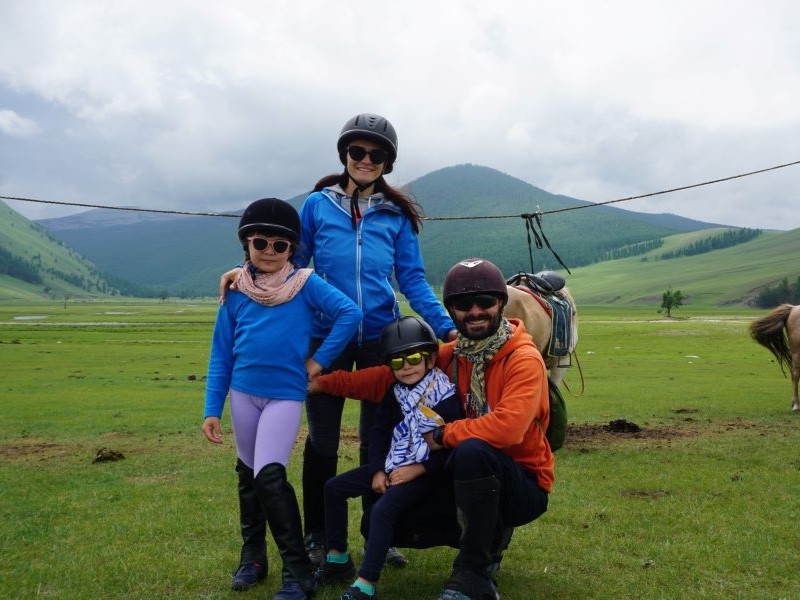
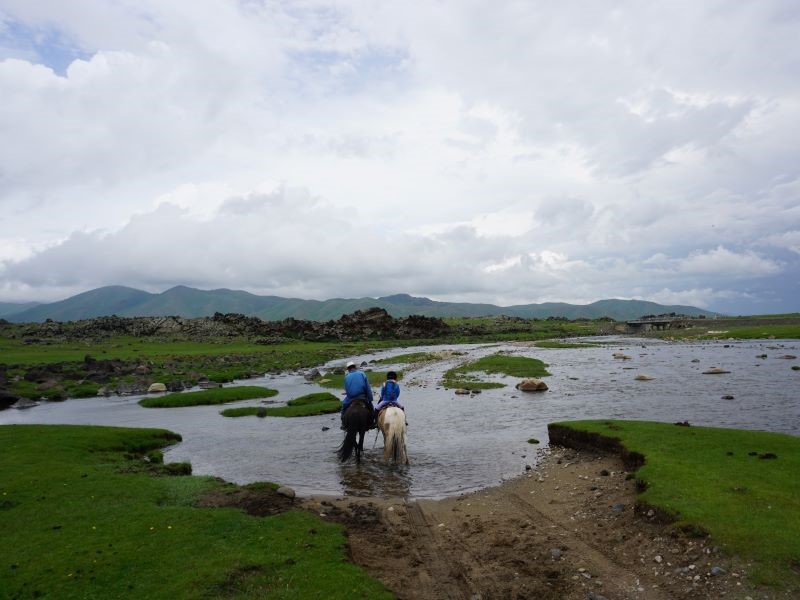
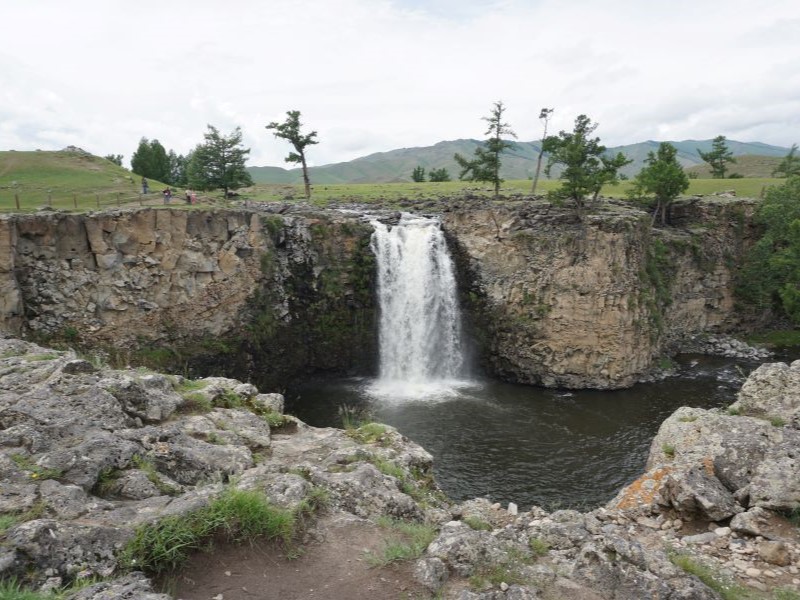
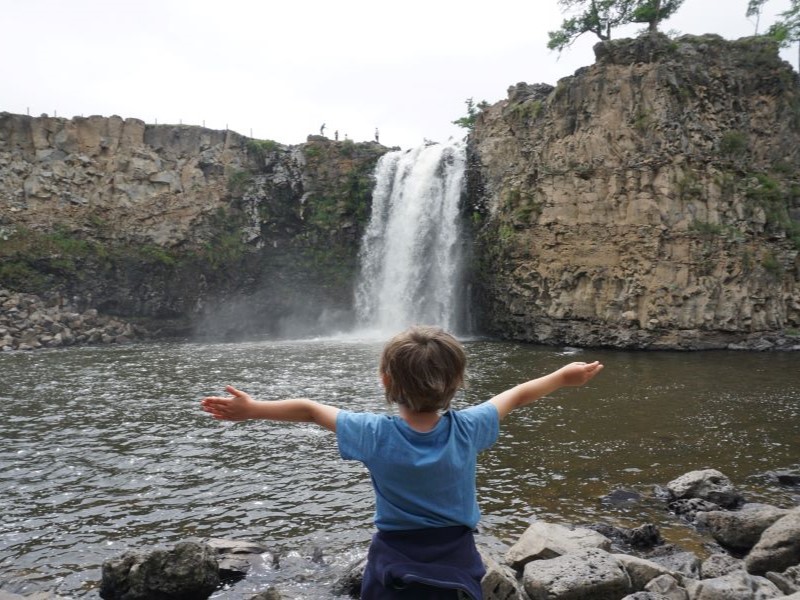
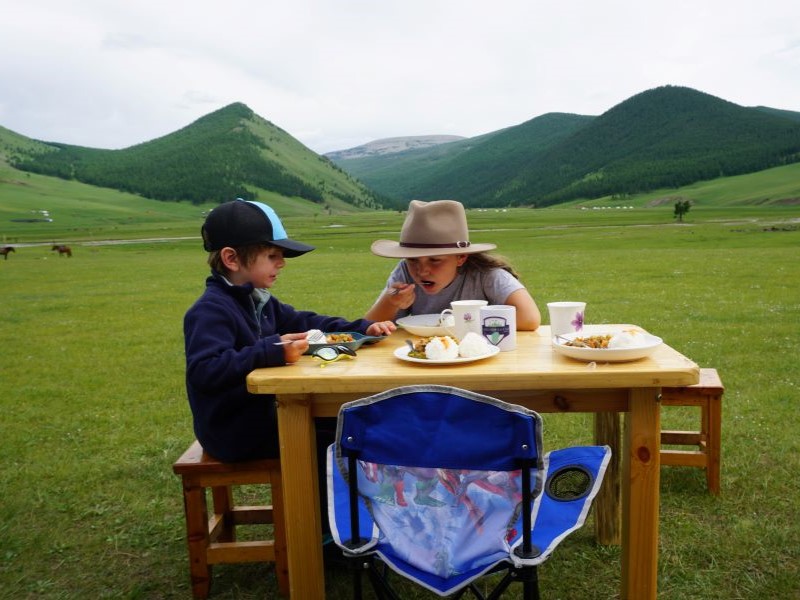
It's late afternoon... It's starting to get chilly... Today we'll spend our second night here with the nomadic shepherds, here where there's no water except the river, no electricity except a car battery with a wire connected to a light bulb, and to turn it on you have to wrap the wire directly around the battery's two poles!
The children play in the rain as if it were the most normal thing in the world, Nora flies her kite, Jago plays with his dinosaurs, it's all wonderful!
Today was a pretty busy day of travel, we left our little Eden and headed for the Karakorum.
The background changes again: green meadows, yaks, wild horses in the distance and the sense of freedom give way to asphalt roads, people of Ulan Bator on excursions as we arrive in the city of Karakorum.
By the mid-13th century, Karakorum was a bustling town. Genghis Khan established a supply base there, while his son ordered the construction of a full-fledged capital to attract traders and workers from all over Asia and Europe. It was also an important hub on the Silk Road.
The good times lasted for about 40 years until Kubla Khan moved the capital to Khanbalik (now Beijing) and this marked the beginning of Karakorum's decline.
Not far from the center stands Erdene Zuu Khiid (100 Treasures), the first Buddhist monastery in Mongolia. It had between 60 and 100 temples and housed around 1,000 monks. It lasted until 1937, when Stalin's purges rendered it unusable after destroying almost all the temples and killing or deporting the monks to Siberia.
The monastery was closed until 1965 when it received permission to open as a museum.
Only in 1990, with the collapse of communism, was religious freedom restored.
The visit was very emotional and suggestive… I felt like I was walking through the streets of the forbidden city of Beijing or next to the Sinhalese or Burmese Buddhist stupas.
Last night in the ger, tomorrow we return to Ulan Bator.
Tonight we broke all records… If until now we had a bathroom, a hole dug in the ground and protected by a wooden shack… here today we don't even have that… but that's okay.
We arrive in the capital in the afternoon; our last day with Thema and Chingun, we'll miss them!
We immediately got stuck in traffic on the outskirts of town. I thought I hadn't missed all this civilization...
I thought: what could one of the many nomads I've met feel when, along the road, at a certain point, a valley appears full only of buildings and skyscrapers?
Uka has booked us this penultimate evening in a nice hotel, right in the center, we really needed a hot bath after this long wandering.
We set off immediately to explore the historic center with Nomi on foot, we stopped in one of the many supermarkets to buy an iced tea and a Coke and I was already thinking about the urum (milk cream similar to clotted cream) from this morning and it seemed like something so far away, but are we still in Mongolia?
A short stop at the Betub Temple, a small Buddhist temple featuring a large statue of Gandhi.
We end in Sukhbaatar Square. In July 1921, the center of Ulaanbaatar, the "hero of the revolution" Damdin Sukhbaatar declared Mongolia's independence from China.
The square today bears his name and hosts a statue of him on horseback. The original has been replaced with a bronze one. There is also a huge statue of Genghis Khan ruling the nation, and behind it stands the majestic Government building.
We buy some onigiri at the usual “Nice to CU” supermarket and off we go to the 4-star shower… we haven’t washed properly for four days!
Natural History Museum. Perhaps one of the most beautiful I've ever visited, thanks in part to Jago and Nora's astonished excitement.
The collections are dedicated to Mongolia's geology, flora, and fauna, with a huge hall filled with numerous stuffed animal species. It's a wonderful way to understand Mongolia's remarkable biodiversity and its landscapes.
The most incredible section is the paleontology hall, with a large collection of dinosaur skeletons and fossils, including the legendary 3-meter-tall, 5-ton carnivorous Tarbosaurus. If you're traveling with children, this is a must-see!
We stop to visit the Gandan Khiid, the largest Tibetan Buddhist temple in Mongolia.
It was built in 1838 but destroyed in 1937 during the communist purges. Only in 1990, like Karakorum, was it restored and officially reopened. Today, it houses several hundred monks and contains one of Mongolia's most famous Buddhist statues.
We leave Ulaanbaatar and about 30 km away we find the majestic statue of Genghis Khan, 40 meters tall and declared the tallest equestrian statue in the world by the Guinness Book of World Records. You can climb to the horse's tail, from which a staircase leads to the head. Legend has it that this monument is located here because Genghis Khan once found a golden whip.
Not far away, in Terelj National Park, we admire the beautiful rock formation called Turtle Rock.
We have lunch in a ger restaurant along the way and in the evening we return to the very busy Ulan Bator.
Last night at the beautiful Ibis Style hotel, we're going back tomorrow!
Монголдоо баярлалаа
Error: No feed found.
Please go to the Instagram Feed settings page to create a feed.